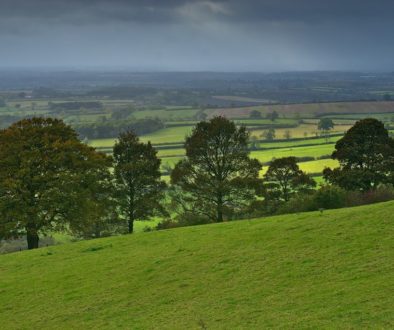So just how do we define ‘rural’?
According to the Office for National Statistics, some 43.7 million people in England (82.4% of the population) lived in urban areas (settlements of more than 10,000 people) in 2011. At the same time, 9.3 million people lived in rural areas (17.6% of the population) – defined as smaller towns (less than 10,000 people), villages, hamlets or isolated dwellings.
These figures are important because they are used by policy and decision makers to consider whether policies impact differently across various settlement types.
But what do these classifications actually mean for rural residents, especially those living in towns? Jessica Sellick investigates.
To tackle some of the many and diverse challenges facing rural areas – and decide who’s rural or urban – back in 2004 a ‘Rural Definition’ was introduced. The Definition was a joint project between a number of government departments and Birkbeck College, University of London. The Definition replaced the Oxford/CA binary ward classification which simply identified Local Authority areas as being ‘rural’ or ‘urban’ according to the type of population they contained. This failed to take proper account of how Council areas include a mix of rural and urban areas.
What replaced the binary approach in 2004 was a ‘spectrum’, or graded system which adopted a settlement-based approach. Professor John Shepherd at Birkbeck College established a six-fold grouping: (1) major urban, (2) large urban, (3) other urban, (4) significant rural, (5) rural 50 and (6) rural 80. These groupings were then aggregated into three categories: predominantly urban, significant rural and predominantly rural. This spectrum or grading from rural to urban was applied to the Output Areas (OA) created for the 2001 Census. OAs are built from clusters of adjacent unit postcodes and are designed to have similar population sizes and be as homogeneous as possible based on tenure of household and dwelling type (this equates to some 175,000+ Output Areas in England and Wales).
This 2004 Rural Definition is important for three reasons. Firstly, the new definition was innovative in that it provided a grounded ‘rurality’ according to the settlement pattern expressed as the density of households. Secondly, it provided a measure of ‘sparsity’ alongside this settlement morphology. Thirdly, a fourth type of rural was defined: ‘larger market towns’. This identified urban areas having a set of functional attributes that serve a wider rural hinterland. Identifying larger market towns was needed because the rural definition only related to urban areas below 10,000 population, even though may places above this limit serve a rural population [NB: this was recognised in the 2000 Rural White Paper where a population range of 2,000-20,000 was used to delimit market towns]. The new Definition therefore assessed whether a town or urban area was likely to serve a wider area according to whether it had: at least 3 shops, at least 1 bank or a solicitor, at least one General Practitioner, at least 3.5% of its addresses as being non-residential (i.e., commercial in nature), and at least 1.3 shops per 1,000 population.
In November 2013, the 2001 data was updated with 2011 Census data. Here, areas classified as ‘rural’ in 2001 grew by 6.4% in population by 2011; while areas classified as ‘urban’ grew by 8.1% over the same period. By growing in population, some built up areas classified as rural in 2001 grew to become reclassified as urban in 2011, while others were absorbed into expanding urban areas. For example, Oakham in Rutland increased from 9,620 people in 2001 to 10,992 in 2011; Broadbottom – which was seen as a separate settlement in 2001 – became treated as part of the Manchester built up area in 2011; and Capenhurst changed from urban to rural because of its changing morphology.
In 2014, new research was carried out by the University of Sheffield to further develop the Rural Definition. This is part of an attempt by Defra to identify those settlements with a population in excess of 10,000 population which seem likely to have an enduring though not unchanging role as a service hub of some sort for their rural hinterland. Some settlements with a population over 10,000 have now been identified as service and business ‘rural hub towns’ for their rural hinterland. This updates the previous classification of ‘larger market towns’ with a population of 10,000 to 30,000. According to this new research, hub towns are: built up areas or settlements with populations of 10,000-30,000 people; a residential ratio for measuring the potential for a concentration of population with the potential to form a hub for local services (the density of residential dwellings within 2 kilometres compared with the residential density within 10 kilometres); the density of non-residential establishments (within 2 kilometres and compared to 10 kilometres); and finally the density of non-residential establishments with the density of residential dwellings (at 2 and 10 kilometres). While the research continues to take account of service provision, these indicators highlight how employment and business have been incorporated. The research is due to conclude in early 2015.
From the 2004 Rural Definition to 2011 Census and Hub Towns research in 2014-2015, these processes of identification and classification are important because: (i) they are the means for reporting statistical information and (ii) they are used for target policies, funding and resources. The Rural Services Network can reveal in the current financial year, the Government is giving grants to rural local authorities worth £421 for every resident. Compare that with the £599 given for each resident in urban local authorities (£178 more). Rural households are paying higher council tax bills while receiving fewer services than their urban counterparts.
These definitions and classifications (in all their complexity) cannot be viewed in isolation – for they do not attend to the ‘look’ or ‘feel’ or differences within a locality or what people think defines rural and urban. Nor do they consider how clusters of rural settlements work together (i.e., one village may have a shop/post office, a neighbouring village a GP surgery, another village a primary school etc.) Moreover, they are advisory classifications without statutory or regulatory force. It is this context which needs to be taken into account when looking at data.
Within these categorisations and definitions, ‘towns’ are increasingly viewed as playing key roles in service provision, jobs and growth. This is because there are opportunities to grow businesses in small towns and other rural areas and towns tend to be good at providing local services such as credit unions, banks and other infrastructure. According to research from Lloyds Bank in November 2014, there is a higher premium attached to living in a market town: house prices (on average) £24,766 (or 12%) higher than in the rest of a given county. Beaconsfield in South Buckinghamshire has the largest house price premium with homes trading at 156% (or £501,648) above the county average. Wetherby has the next highest premium with prices 99% (£157,016) above the West Yorkshire average, followed by Bakewell in the Derbyshire Peaks (88% or £147,224). One in eight market towns in the survey have a house price premium of at least £100,000.
And yet since 2012, when the Government began to put in place a range of new measures designed to improve high streets and town centres much of this work has ended or fizzled out. There were 24 Portas Pilots and 330 town teams with other initiatives relating to changes to business rates, reigning in parking enforcement practices and the establishment of community led business improvement districts. Perhaps recent policy focus has concentrated on urban areas and less so on rural towns? Action for Market Towns (AMT) / Towns Alive, a national membership body providing small towns with information and advice, examples of best practice and national representation, unfortunately closed in October 2014. Ray Pahl (1935-2011), professor at the University of Essex and former director of AMT coined the phrase “the forgotten fifth” to recognise how 20% of England’s population live in towns and are negated by policy and decision makers. As per the Rural Definition and classifications, the tendency to conflate market towns (those with a medieval charter and/or those with historical roles in trading or mining?) can divert policy and decision makers away from practical issues.
This does not mean that there haven’t been attempts to develop ‘types’ or ‘categories’ of towns. Professor John Shepherd at Birkbeck College developed eight town categories: middle aged/managerial jobs; single persons/routine jobs; older persons/leisure jobs; young families/administrative jobs; professionals/commuting; disadvantaged; routine jobs/agriculture/manufacturing; and age mix/professional jobs. And Liz Price at the University of Lincoln developed a typology of market towns in the East Midlands containing a six-fold categorisation: sub regional centres; manufacturing/transition economies; strong local economies; healthy town economies; dependent/commute settlements; and centres without critical mass.
With rural and urban in flux and (market) (small) (rural) towns not so high on the policy agenda, these definitions and categorisations can be seen as part of an attempt to recognise how rural and urban operate at a spatiallevel. However, perhaps what is missing from this narrative is how this could foster new ‘Rurban’ functional approaches which ensure better service delivery for rural and urban residents. With the Hub Towns research completing, watch this space…
Jessica is a researcher/project manager at Rose Regeneration; an economic development business working with communities, Government and business to help them achieve their full potential. She is about to undertake a review of a Lottery funded project focusing on how to conserve and improve a town’s assets for future generations as well as completing a European project on ‘social value’.
Jessica’s work includes research for Defra on alternative service delivery and local level rural proofing. She can be contacted at jessica.sellick@roseregeneration.co.uk or on 01522 521211. Website: www.roseregeneration.co.uk Twitter: @RoseRegen


